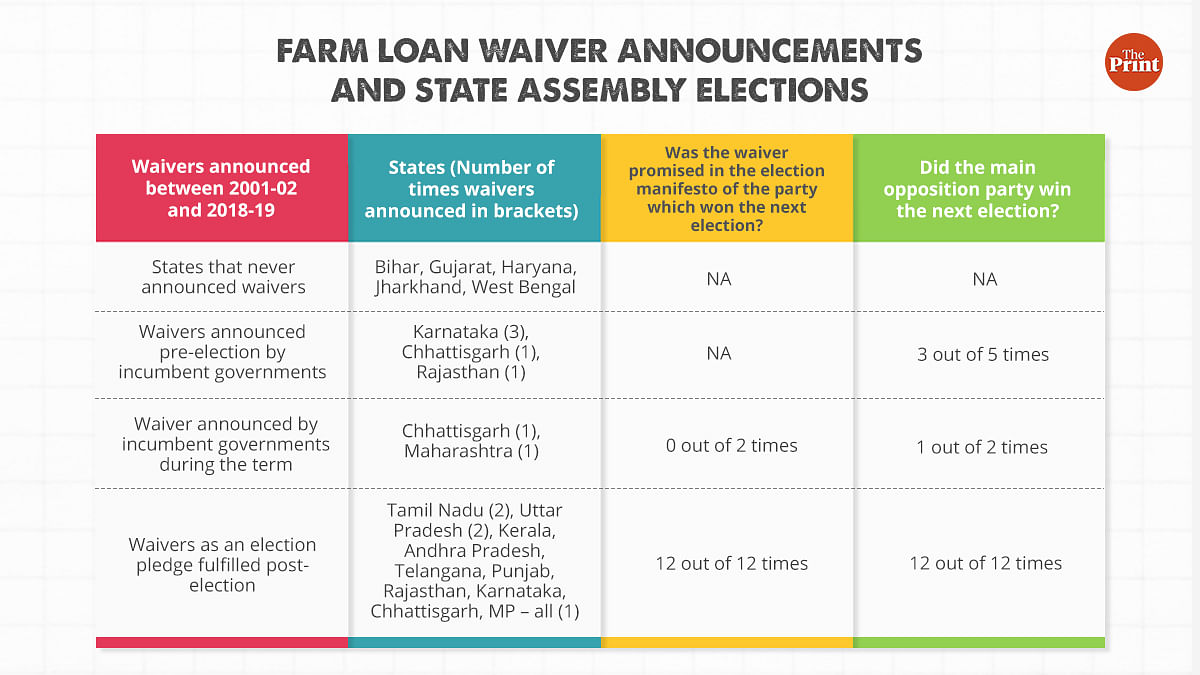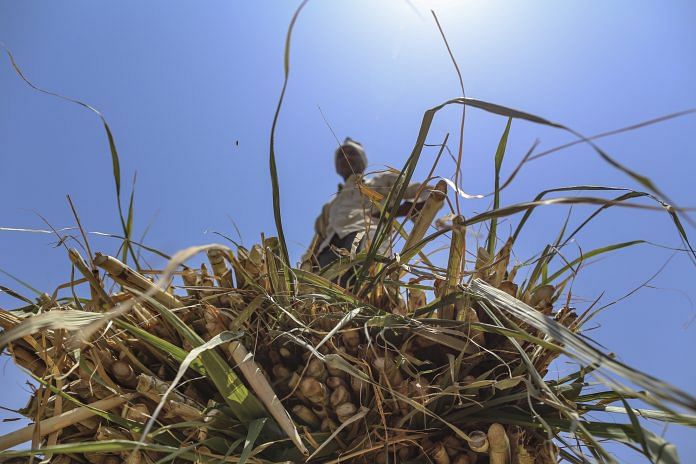Some of the big states in India, including Punjab, Uttar Pradesh and Gujarat, are gearing up for assembly elections in the next few months. The pre-election announcements by the ruling governments as well as poll pledges by the opposition parties are pouring in thick and fast.
One of the sectors that lends itself to such kind of political maneuvering is agriculture, given that there are nearly 93.1 million agricultural households totalling nearly 456 million people in India, based on data from the 2019 Situation Assessment Survey of Agricultural Households. The repeal of the three farm laws on the back of long-standing protests by some farmer groups make agriculture a prime target for electoral politics in the forthcoming state elections.
The incumbent government in Punjab recently announced that it would waive off debts of up to Rs 2 lakh for those small and marginal farmers with land up to five acres, and who were earlier not covered under the existing loan waiver scheme. In Gujarat too, the opposition party has promised a farm loan waiver if it wins the election.
We discuss the electoral politics of farm loan waivers during state elections since the beginning of the last decade. We do not discuss the economics of these waivers or their effectiveness as a policy tool to solve agricultural woes. Rather, we look into their fascinating history as an election tool aimed at garnering the support of the largest special interest group in India — farmers and their families.
India follows a first-past-the-post voting system and history suggests that once a party crosses a particular threshold in votes, around 30–35 per cent, it tends to win the majority seats. Electoral politics thus, tends to be more biased towards targeting special interest groups, farmers and their families being the largest such group. This is especially the case in states where there is frequent transfer of power between the incumbent and the opposition parties. In contrast, in proportional electoral systems, political parties tend to gain by broader populist programs during the pre-election stage rather than targeting special interest groups.
Also read: What unites Bihar and Kerala young men? It has to do with jobs
Waivers in last two decades
Among 16 major non-special category states in India, 11 announced a farm loan waiver between 2001-02 and 2018-19, including both prosperous ones such as Kerala, Punjab, Maharashtra, Karnataka, and Tamil Nadu and poorer states such as Uttar Pradesh (see table). We consider only the non-special category states since the special category states and smaller states receive preferential fiscal treatment to manage state budgets from the central government, which may influence their decisions about farm loan waivers. There are five states, namely Bihar, Gujarat, Haryana, Jharkhand, and West Bengal that have never announced a farm loan waiver. For the states that did, the waivers varied widely in the range 0.9-4.6 per cent of Gross State Domestic Product (GSDP) during these years, as per our calculations. Karnataka has announced most farm loan waivers, four times, followed by Chhattisgarh, on three occasions. Tamil Nadu, Uttar Pradesh, and Rajasthan have given it twice each.
But how are these waiver announcements and pledges timed and do they help garner an election win?
After an exhaustive compilation, based on the announcements by the governments and readings of election manifestos of ruling parties and the main opposition parties, we found that only five waivers out of the total 19 were announced (including three by Karnataka) by the incumbent governments before the election (see table). In contrast, while 12 waivers were implemented to fulfil the election manifesto immediately after winning the mandate, only two waivers came in between two elections.

In three out of five cases, where the waivers were announced before the election, the incumbent government lost, suggesting the presence of a rational electorate. In contrast, on 11 occasions when a waiver was pledged — one involving the incumbent government and 10 by the opposition party — a favourable electoral outcome was achieved. Prima facie, evidence suggests that opposition parties benefit more in terms of an election win by displaying a firm commitment to a waiver rather than the incumbent government announcing a waiver prior to an election.
There are two pairs of waivers – Karnataka related to the May 2018 and Rajasthan related to December 2018 elections – where the incumbent party announced a waiver prior to the election with the main opposition party also promising it in its manifesto. In both cases, the opposition party won and implemented the second waiver. In Chhattisgarh, a waiver was announced by the incumbent party in August 2012, ahead of the state elections in December 2013. After the party won the election, it again announced a waiver two years later in December 2015.
Also read: Do young Indian women work? Gujarat tops single working women, among lowest in married
The agrarian distress
Farm loan waivers have been announced by parties across the spectrum, including both the main national parties, Bharatiya Janata Party and Indian National Congress, the Communist Party of India, and a number of regional parties. The waiver policy is thus not specific to a party ideology but rather an opportunistic electoral tool. It is also noteworthy that, together, all five southern states – Karnataka, Tamil Nadu, Kerala, Andhra Pradesh and Telangana, which are relatively prosperous, have announced nine out of the 19 farm loan waivers in the last two decades. Unlike Bihar and West Bengal, in the southern states, political power often changes hands.
In terms of agrarian distress, out of the 19 farm loan waivers, in 12 cases, there was no moderate or severe drought during the year. However, there is a case for agrarian distress building up over the years in states which have announced waivers the highest number of times. For example, states where waivers were announced at least twice, the drought occurrence between 2001-02 and 2018-19 was in nearly 25 per cent of years on an average.
Overall, however, the farm loan waiver announcements are ‘timed’ closer to an election and not ‘timed’ during years of moderate or severe droughts which increase financial distress of the farmers. The next few months provide a fascinating opportunity to test if history would repeat itself.
Vidya Mahambare is Professor of Economics, Great Lakes Institute of Management. Sowmya Dhanaraj is Assistant Professor of Economics, Madras School of Economics. Pragati Mittal is a Postgraduate student at Madras School of Economics. Views are personal.
(Edited by Anurag Chaubey)



